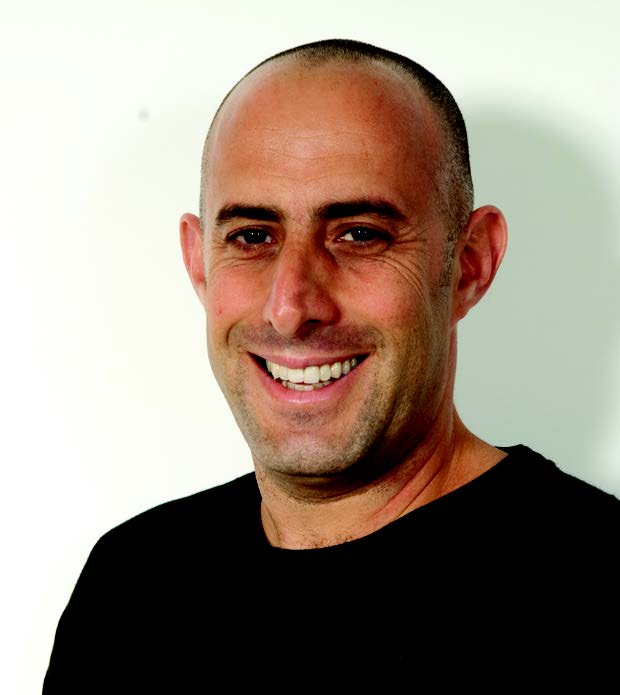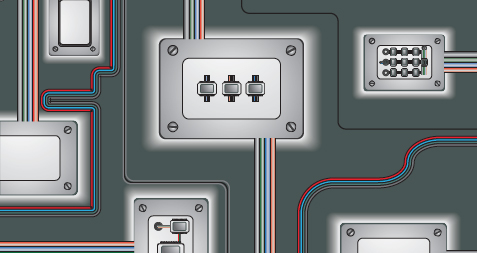Tiny particles such as atoms and electrons often behave in mysterious and surprising ways. Unlike larger objects composed of many particles, they can, for instance,exist simultaneously in more than one state. “According to the laws of quantum mechanics, a single atom can be in multiple locations at the same time and can be doing different things at the same time. We physicists call this the superposition principle,” says Dr. Roee Ozeri of the Weizmann Institute of Science’s Department of Physics of Complex Systems.

Dr. Roee Ozeri
“A quantum computer could solve computational problems that cannot be solved today, improve our ability to perform research, and allow us to crack the most complex encryption codes.”
Dr. Ozeri and his research team are exploring how to design a computer that takes advantage of quantum mechanical phenomena such as superposition. “If we could build a quantum computer, it would be much more powerful than any computer in use today,” he says. “It could solve computational problems that cannot be solved today, improve our ability to perform research, and allow us to crack the most complex encryption codes.”
In a conventional computer, components called transistors act as switches that regulate electric current. There are millions of interconnected transistors on each microprocessor chip. The transistors store bits of information, and each bit represents either a “1” or a “0,” depending on whether the switch is on—allowing the current to flow through—or off.
Quantum computers, however, would store information using quantum bits, or qubits. Qubits can represent a “1” and a “0” at the same time, due to superposition. Because of this, a quantum computer could perform a vast number of computations simultaneously and be a great deal faster and more efficient than traditional computers; in fact, computers based on quantum mechanics might be able to fairly quickly complete calculations that would take today’s computers a million years.
Quantum theory holds that the very act of observing a system changes that system—which makes research a challenge.
“Since we’re trying to create a computer out of building blocks that obey the laws of quantum mechanics, those building blocks have to be small,” explains Dr. Ozeri. “We use single atoms as qubits.”
Dr. Ozeri works with atoms of the element strontium that have undergone “laser surgery” to remove some of their electrons. He fires several of these ions (atoms that carry an electrical charge) into a vacuum chamber, where they’re trapped in an array of electrical fields while another laser cools them to within a few millionths of a degree of absolute zero. Under these conditions, the laws that govern ion dynamics are those of quantum mechanics.
One of the basic tenets of quantum theory is that the act of observing a system changes it. If a scientist attempts to measure or observe a qubit, for example, it can collapse into a single state rather than maintaining a superposition of states. However, Dr. Ozeri’s experimental system—one of only a few in the world—allows him to hold ions in a kind of trap where he can observe them existing in two states at once; this highly controllable system enables him to investigate how to use trapped ions as qubits.

Recently, Dr. Ozeri and his colleagues set a new record for measuring magnetic vibrations using the spin of a single atom, obtaining measurements that were a hundred times more accurate than the previous record. As reported in Nature, the team was able to measure magnetic vibrations with a spatial resolution of a just few nanometers (a few billionths of a meter). The technique, notes Dr. Ozeri, could be used in physics labs to improve the sensitivity of all sorts of quantum sensors.
Dr. Ozeri earned both his MSc and PhD degrees in physics from the Weizmann Institute. After conducting postdoctoral research in quantum information processing at the Time and Frequency Division of the National Institute of Standards and Technology in Boulder, Colorado, he joined Weizmann’s faculty in 2007 under the “Brain Gain” initiative, which encourages talented young scientists to establish their research careers in Israel, and at Weizmann.
Dr. Ozeri’s experimental system—one of only a few in the world—allows him to hold ions in a kind of trap where he can observe them existing in two states at once, enabling him to investigate how to use trapped ions as qubits.
Now that he is a overseeing a lab of his own, Dr. Ozeri is managing and mentoring a group of graduate students. At first, he says, this was somewhat intimidating; “I knew the students at the Weizmann Institute were good, but when I started working with my group, I got scared. I thought: These guys are so smart; how can I teach them?” he recalls. He soon realized, though, that he had a lot of experience and knowledge to share. “Mentoring students is very fulfilling and it’s a lot of fun, too,” he says.
Dr. Ozeri also values the support he received from the Institute and donors that allowed his group to make rapid progress with their experiments. “We were able to build a very good lab here within a relatively short period of time,” he says. “When I travel to other leading labs around the world, I’m very proud of what we did.”
Dr. Roee Ozeri's research is supported by David Dickstein, France; Martin Kushner Schnur, Mexico; the Crown Photonics Center; the Wolfson Family Charitable Trust; and the Yeda-Sela Center for Basic Research.
